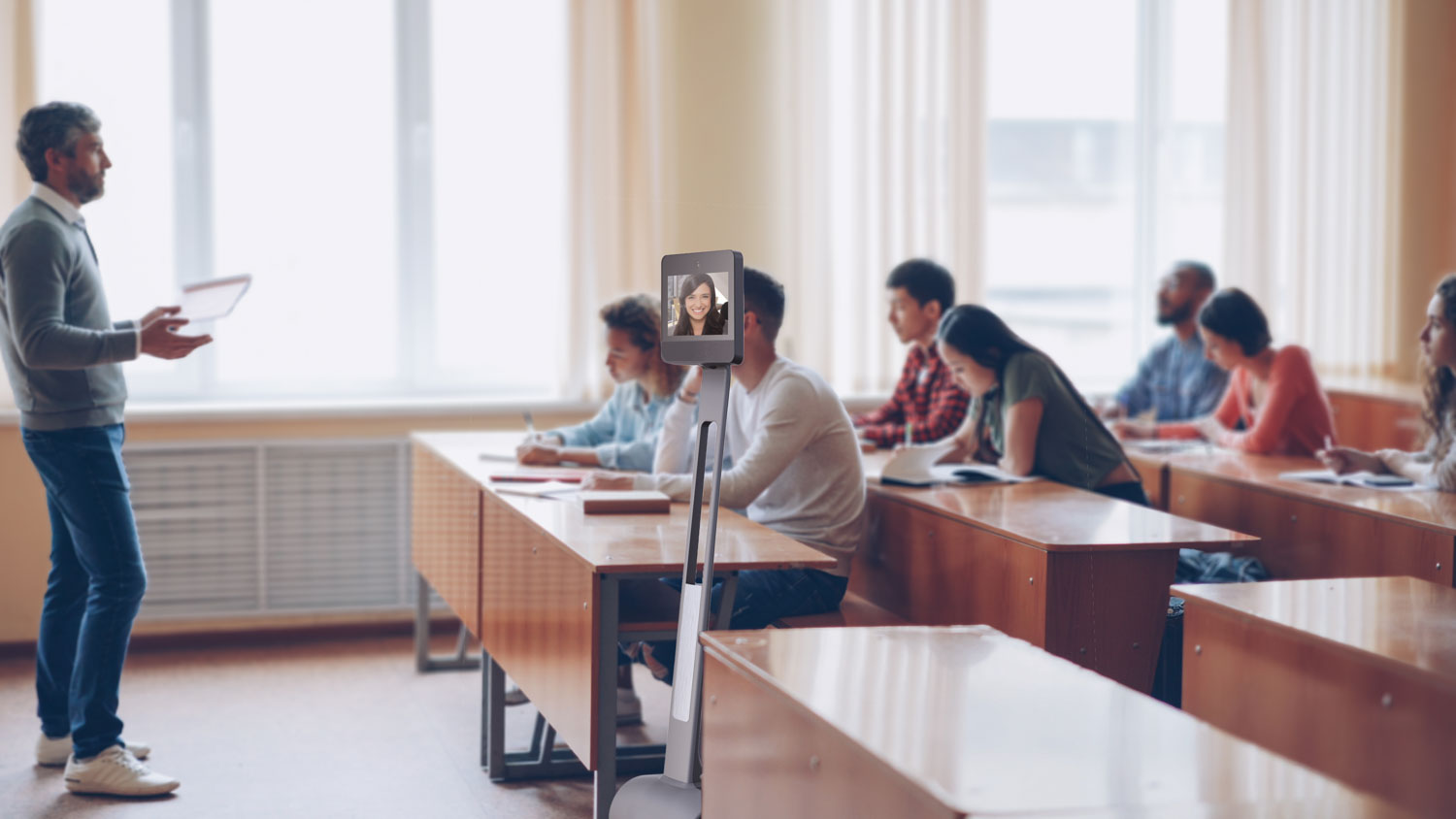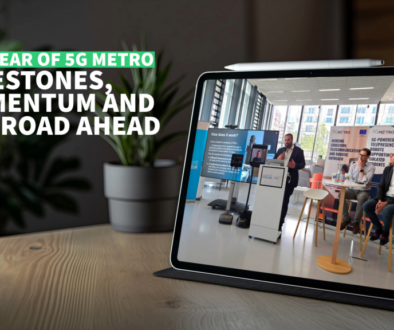As part of the 5G Metro project, we are exploring how 5G technology can take telepresence robotics to the next level. In this article, Marine Le Borgne, Product Director at Awabot, shares the company’s vision for the future of telepresence: the challenges, the opportunities, and the technological evolution that will make robots more autonomous, more interactive, and more seamlessly integrated into their environments.
From improving the sense of presence and embodiment for remote users to unlocking new applications in education, healthcare, and industry, Marine outlines how 5G Metro will help bridge the gap between today’s telepresence and tomorrow’s tele-action.

Telepresence robotics is no longer a futuristic concept — it’s a mature, proven technology. Already deployed in education and other fields, it provides meaningful connections for users who cannot be physically present, helping reduce the environmental impact and the time demands associated with travel while opening new doors for accessibility and inclusion.
At the heart of this technology are two core objectives:
- To recreate a sense of presence as realistically as possible, allowing the remote user to feel and be perceived as truly “there” — not just watching from a distance, but occupying space, making eye contact, and engaging in spontaneous conversation.
- To promote embodiment, meaning the user is not just controlling a machine, but is socially accepted as a participant in the physical environment. The aim is for their personality and identity to shine through the robot, so they are seen as a person — not a device. This human-centered goal is essential for integration into social settings like classrooms, workplaces, or hospitals.
Achieving this requires delicate balance. The robot must act as an interface between worlds — digital and physical — without becoming a distraction or triggering discomfort, especially the well-known “uncanny valley” effect that arises when machines appear almost human but not quite.
Simplicity First — and Why It Matters
The strength of telepresence lies in its simplicity. Awabot’s robots combine high-quality videoconferencing with a mobile base, intuitive controls, and a deliberately minimalistic design. There’s no touchscreen — you wouldn’t touch someone’s face in real life — and the cameras and microphones are discreetly integrated to avoid any “Big Brother” effect. The interface is reduced to the essentials: navigation, perception of the environment, and basic interaction settings. This ensures that the focus remains on the human behind the screen, fostering social acceptance and avoiding the discomfort often associated with overly human-like machines.
But while this simplicity is key to adoption, it also comes with technical limitations. Today’s telepresence robots are mostly used for basic conversations and movement. If the user needs to open a door, call an elevator, or start a presentation, they often require help from someone on site — limiting their autonomy.
With the 5G Metro project, Awabot is looking beyond current capabilities. The goal: to transform telepresence into a more powerful, autonomous experience — one that goes beyond passive observation to enable real, independent action within remote environments.
From Telepresence to Tele-Action: What 5G Metro Will Unlock
The 5G Metro project is a unique opportunity to push these boundaries. By harnessing the ultra-low latency and high reliability of 5G Standalone networks, Awabot aims to transform telepresence into tele-action.
Remote users will be able not only to navigate physical environments but also to interact with them directly — opening doors, activating building systems, or interfacing with smart equipment — all without human assistance on site.
This evolution is especially promising in education, where students who are homebound will gain greater autonomy and a more natural connection to campus life. But the same capabilities open the door to powerful applications in other sectors:
- Healthcare: enabling remote interaction with connected medical devices for health data collection and diagnostics — especially useful in medically underserved regions.
- Industry: allowing experts to remotely engage with machines or control systems to resolve issues, verify alarms, or trigger processes on-site.
The Challenge Ahead: More Capable, Yet Still Simple
The success of telepresence so far has relied on its ease of use. The challenge now is to integrate new capabilities made possible by 5G — such as interaction with physical infrastructure and connected devices — without compromising the simplicity that has been core to the technology’s adoption.
The 5G Metro project is where that challenge becomes opportunity. By carefully blending enhanced functionality with intuitive design, Awabot and its partners are laying the groundwork for a new generation of telepresence — one that empowers users not just to be there, but to do things there.




